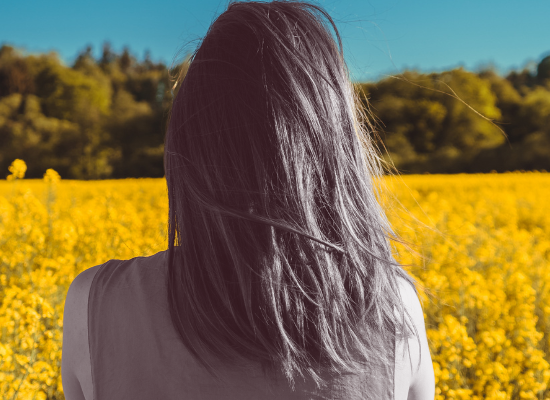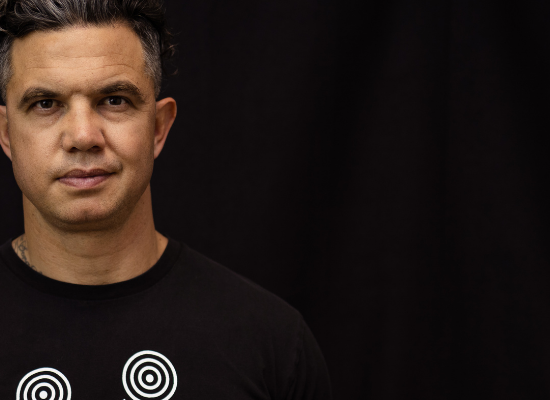
Stephanie Hepburn is a writer in New Orleans. She is the editor in chief of #CrisisTalk. You can reach her at .
Alaska comprises diverse regions, not just geographically but also in terms of culture, access, and population. Dr. Xiomara Owens says some are small and have limited resources, financial and otherwise. In contrast, others have robust behavioral health systems flush with clinicians and chemical dependency and suicide prevention teams. “In smaller regions, there might be one person fulfilling multiple behavioral health and wellness services,” she says. Dr. Owens is the Behavioral Health Aide Training director at the Alaska Native Tribal Health Consortium.
Census data from 2020 illustrates that there are nearly 60 Alaska communities with less than 100 people, and only 24 communities in the state have over 5,000. Within each region, subregions and villages similarly have a diversity of resources. For example, people who live in remote and rural communities tend to experience increased difficulty accessing higher healthcare levels. Dr. Owens says health aides play a vital role in rural and remote Alaska, making up the frontline of healthcare services. “There are health aides in urban areas as well,” she points out, “but the model was originally designed to address the healthcare needs of people in harder-to-reach areas.”
Community health aides live and work in the same area, often resulting in cultural concordance between them and the people they serve. Dr. Owens notes that many are from the same region, community, and of the same culture. “They understand the challenges and strengths that exist for their population, which influence their identity, the workforce, and the services they provide.”
Originally, Community Health Aide Program recruitment was organic—a tribal council or community member identified potential aides because of their “innate skills.” “Skills that would likely make them a strong fit,” says Dr. Owens. Many community health aides are still vetted, encouraged, and supported by their tribal council or community members. However, positions are also posted online and open to anyone to apply, regardless of whether the tribal council has uniquely identified them.
Dr. Owens points out that coordinating care in remote and rural Alaska areas can be particularly challenging. Like other healthcare networks, electronic health records are often connected between regional hospitals, subregional clinics, and village clinics. “A person might have to travel from their village to the regional hub,” she says, “where their electronic health records are typically still accessible.” (However, their records might not be accessible if they travel outside their region.)
As technology and access to telehealth improve, people in Alaska are also increasingly using telemedicine to bridge behavioral healthcare gaps. Even so, in some villages, cell phone or internet access isn’t ever a certainty. Dr. Owens hopes state leaders consider these issues as they design and implement 988. “Without consistent cell phone and internet connectivity,” she says, “there needs to be ample coordination and partnership with the go-to organizations and people in those communities.” Telecom carriers must direct the three-digit number for mental health, substance use, and suicidal crises to the National Suicide Prevention Lifeline by July 16.
The Community Health Aide Program includes three disciplines: medical (called community health aides or practitioners), behavioral health, and dental. There are 550 community health aides or practitioners in more than 170 rural Alaska villages compared to 268 behavioral health aides statewide. Consequently, community health aides often identify or respond to a person first experiencing behavioral health distress. “That can be challenging because they’re often on call 24/7,” says Dr. Owens, “but they’ll stabilize the person in crisis and, if needed, connect them to a higher level of care in a subregional or regional hospital.”
On the other hand, behavioral health aides are frequently already connected with community members who have known mental health or substance use challenges. That might be someone who has had a previous crisis or suffers from a mental health or substance use disorder. “Behavioral health aides are often familiar with those in the community who are struggling,” she says, “or they might hear rumblings from family and community members who are concerned or looking for ways to help.” The behavioral health aide will then reach out to the person, do a follow-up, or refer them to a clinic with a provider who might have already worked with them.
The behavioral health aide frequently has an established relationship with the person and can help stabilize them within the community. “The BHA aims to get the person back on track and reconnect them to resources,” says Dr. Owens. However, if the person needs a higher level of care, the behavioral health aide can consult and brainstorm with their supervisor, a licensed behavioral health clinician, to identify and access the resources. “Ideally, we are trying to serve people in their community, so they don’t have to leave to get the care they need,” she says. “Sometimes, for a person in distress, that’s just being able to connect to someone you know—someone consistent and familiar who understands your life context, challenges, and strengths.” Often, behavioral health aides are in that role.
Like elsewhere in the nation, behavioral health workers in Alaska are experiencing Covid pandemic burnout. As a result, Dr. Owens says there have been recruitment and retention challenges. “People are exhausted because of the increased challenges Covid has presented—they need a break too,” she points out. And when kids had to stay home and navigate virtual school, that also affected the workforce. “Many behavioral health aides are parents and had to make decisions to keep their family safe while others around them were getting sick with the virus.”
However, unlike many other states, most tribal health organizations in Alaska were well prepared to shift to telehealth. Because they live in such remote locations, many were already familiar with telemedicine and had an existing infrastructure to expand upon. “We didn’t have to start fresh like many other places,” says Dr. Owens.
Alaska’s behavioral health workforce has also experienced a large hit among clinicians. “Many stepped away from working for a local organization,” she says, “to working for a telehealth company, which has allowed them to continue to provide behavioral health services from home and manage home and family life amidst Covid.” However, the Alaska Native Tribal Health Consortium’s Behavioral Health Aide Program is growing. The training center now offers an average of 14-18 courses for behavioral health aides every quarter. In the 2021 fiscal year, 169 students enrolled in 365 courses with an average completion rate of 77.25% each quarter. This fiscal year, 376 students have enrolled in 753 courses with an average completion rate of 81.5% each quarter.
Dr. Owens says she’s unsure if the increased interest in behavioral health aide training results from the pandemic—and corresponding increased awareness of the need for behavioral health services—or simply because of timing. “We launched our training center two years ago, and most of our courses are asynchronous,” she says. “People can log in and take the courses when it works best for them, making training more accessible.” That said, she has also witnessed a shift in how people view behavioral health challenges because of the pandemic. “If we, as a society, didn’t think behavioral health was a problem before, well, there’s no way that we can deny it now,” she says. “It’s in our faces: the experience and the effect.”
The behavioral health aide role has been instrumental during the pandemic. “They are a community-based resource,” she says, “that can make it easier for people to manage their challenges at home and get the help they need.” In addition, she points out that the pandemic has normalized behavioral health challenges in a way she hasn’t seen before. “Aides have helped people understand that it’s common to experience these challenges, and there’s something you can do about it.”
Behavioral health aides have also been instrumental in community outreach during the pandemic, developing opportunities for people to learn basic psychoeducation and helping them understand and recognize stress, anxiety, and depression symptoms and make recommendations. “Someone might say, ‘I’ve noticed I haven’t seen you out walking or making crafts,’ and then ask, ‘do you need any materials for your crafts?” They might also help a person gather wood to keep warm in their house. “It’s important to have crisis interventions,” says Dr. Owens, “but it’s also imperative to do prevention and provide education to the community because it makes those interventions much more effective when needed.”
Community members who are able to identify that they or someone else is struggling can practice or suggest self-care and see if that works. “But people first have to learn what self-care means to them and develop it as a practice,” says Dr. Owens, “and people have to be willing to hear that, which Covid seems to have helped with.” She says the community has a more substantial safety net when people better understand mental health and substance use challenges.
Yet, it’s not just community members who need an increased understanding of behavioral health issues but also the other health aide disciplines. That’s why Dr. Owens has been involved in efforts to increase interdisciplinary training, teaching each discipline about the others and how best to work with each other. Feedback has been immensely positive. “The aides enjoy learning about the other disciplines,” she says, “and we want them to be prepared for when a patient shows up with a problem outside their scope, so they know how to connect them with another provider.” The result will likely be increased referrals. In addition, the interdisciplinary approach has created opportunities for people to learn together and see their patients as whole people, not just through the lens of their discipline.
“We want people to thrive and be well,” says Dr. Owens. “The health aide model works, and we want to share that with others. We know we aren’t the only state struggling with issues related to suicidality, substance use, and domestic violence. We’ve seen how this model helps, especially in remote and rural areas.”






